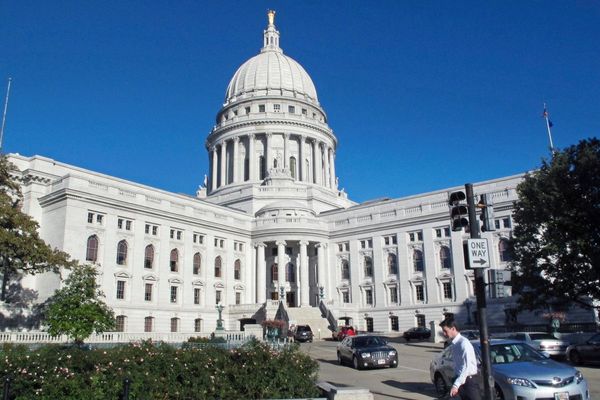Friday's Supreme Court ruling on the constitutionality of President Biden's student loan forgiveness may be unprecedented in its near-immediate impact on consumer finances. After the conservative court's striking down of the $430-billion giveaway, the U.S. economy appears likely to face a close brush with recession. Still, the S&P 500 rallied as the Fed's key inflation rate eased amid a consumer spending slowdown.
The stakes for the ruling in Biden v. Nebraska are heightened by the fast-approaching end to the moratorium on federal student loan payments that's been in place since April 2020.
Student Loan Payments To Cut Consumer Spending
Deutsche Bank estimates that a resumption of student loan payments will cut consumer spending by up to $14 billion per month. That amounts to $305 per borrower, analysts Gabriella Carbone and Krisztina Katai wrote on June 21. Interest will begin accumulating on student debt on Sept. 1, with first payments due in October.
Goldman Sachs estimates that personal consumption spending could face an average hit of six-tenths of a percentage point in the last four months of 2023. If the Supreme Court had allowed Biden's student loan forgiveness plan to stand, the drag on spending would have been cut in half.
The White House had said that its student-loan forgiveness program would fully erase student debt for about 20 million borrowers. About 60% of the 43 million eligible for debt reduction have received Pell Grants, making them eligible to have $20,000 in student debt erased. Other borrowers could have had up to $10,000 of their student debt canceled. Eligibility was intended to extend to those earning up to $125,000 per year, or $250,000 for couples.
Join IBD experts as they analyze actionable stocks in the stock market rally on IBD Live
Supreme Court Student Loan Case
The Supreme Court ruling hinged on two questions: Did Biden overstep his authority and, if so, did Republican-led states have standing to sue? Recent rulings by the conservative-dominated court show little patience for government agencies adopting consequential policies without the explicit consent of Congress. That's why analysts believed the issue of standing would be paramount.
The plaintiffs argued that Missouri finances could suffer if state-created student-loan servicer MOHELA loses revenue due to debt cancellation. The conservative justices agreed, finding that the loan forgiveness could cost the agency $44 million a year in fees.
Student Loan Payment Holiday Impact
A New York Fed study estimated that student loan borrowers saw $195 billion worth of payments waived in the first two years of the moratorium. That sum has now likely grown to around $300 billion.
The student loan payment holiday not only allowed borrowers to spend more freely but enabled them to take on other debt. Yet now, even before a resumption of student loan payments, Deutsche Bank notes a "sharp rise in credit card delinquency rates," from 1.5% in the third quarter of 2023 to 2.4% in the latest quarter. Delinquencies remain well below the peak of around 6% triggered by the 2008 financial crisis.
The student loan holiday is the last major Covid-era government support for household finances. Stimulus checks, inflated jobless benefits and expanded child tax credits are long gone. In the first quarter, emergency SNAP (Supplemental Nutrition Assistance Program) benefits expired. That amounted to a hit of at least $95 per month for eligible households, or about $3 billion per month. Medicaid income limits, suspended at the start of the Covid pandemic, are now returning. That could knock up to 17 million people out of the program over the next year, leaving them to find more costly insurance coverage, a Kaiser Family Foundation analysis finds.
The Fed's Key Inflation Rate Cooled In May As Spending Slowed
Retail Sales Stall
Even before student loan payments restart, consumer spending is already running out of steam. Retail sales slipped 0.1% in the three months through May vs. the prior three months, on a seasonally adjusted basis.
Spending on services, apart from an uptick on health care, also appears to have slowed. "The recent flattening in airline passenger numbers and hotel occupancy, and declining diner numbers at restaurants, suggest that a degree of caution is creeping into consumers' spending decisions," wrote Ian Shepherdson of Pantheon Macroeconomics.
Consumer caution, even more than a resumption of student loan payments, is the real U.S. recession risk. Savings as a percentage of disposable income bottomed at 2.7% last June, rising to 4.6% in May. But the savings rate is still just over half of its nearly 9% level ahead of the pandemic. A return to pre-pandemic levels could amount to an annual drag on spending of around $700 billion per year.
Wall Street economists have been cutting odds of a recession lately, and the Federal Reserve seems to agree. New projections released this month showed the U.S. economy growing 1% this year, up from a 0.4% forecast in March. The Fed expects similarly tepid growth in 2024. Yet the Fed has signaled that it's not done hiking interest rates as it works to bring down inflation. Policymakers expect the jobless rate to reach 4.1% this year and 4.5% in 2024, which may add to consumer caution.
S&P 500 Rallies
The S&P 500 rose 1.1% to 4445 in Friday morning stock market action. That puts the S&P 500 on track for its highest close since April 2022.
Investors took their cue from the May personal income and outlays report that showed the Fed's key inflation rate cooling a bit. However, the same report also showed that consumer spending has slowed sharply, with inflation-adjusted spending flat in three of the past four months.
Still, the Fed appears almost sure to hike its benchmark interest rate on July 26. Another hike might come at meetings in late September or early November. Since the first student loan payments aren't due until October, economic data may not reflect much impact until very late this year.
Be sure to read IBD's daily afternoon The Big Picture column to stay in sync with the market's underlying trend and what it means for your trading decisions.







